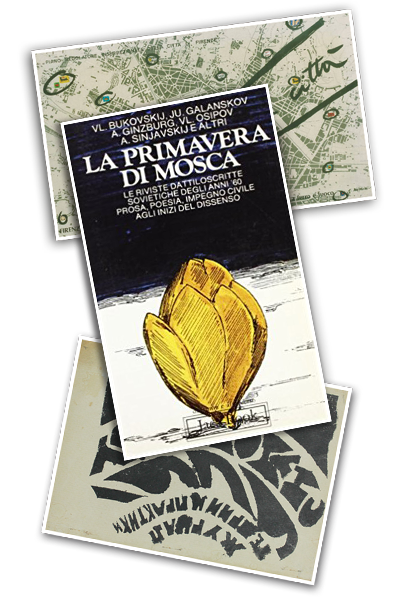The state of the art on the cultures of dissent is mostly characterized by studies which refer to single geographical-cultural areas, offering a specific perspective of these phenomena, which up to now have not been considered in their interconnection. In particular, as regards the two Western European countries examined here (Italy and France), there are some comparative publications on the new avant-garde like E. Sanguineti, J. Burgos, Per una critica dell’avanguardia poetica in Italia e in Francia (Bollati Boringhieri, Turin 1995), B. Sprenger, Neoavantgardistische Theorienbildung in Italien und Frankreich (Peter Lang, Bern 1992) and some other contributions devoted to the link between underground culture and political protest movements like: T. Brown, L. Anton, Between the Avant-Garde and the everyday: subversive politics in Europe from 1957 to the present (University of Copenhagen, Copenhagen 2011); S. Giles, M. Oergel, Counter-cultures in Germany and Central Europe (Peter Lang, Bern 2003), P. Echuarren, C. Salaris, Controcultura in Italia 1967-1977 (Bollati Boringhieri, Turin 1999); S. Jezo-Vannier, La presse parallèle: la contre-culture en France dans les années soixante-dix, Le mot ed le reste (Marseille 2011), M. Benton, French encounters with the American counterculture, 1960-1980 (Ashgate, Franham 2011), P. Tonini, Vent’anni di controcultura fra America e Italia (Edizioni dell’Arengario, Guassago 2000).
As far as concerns Eastern Europe and the Soviet Union, the number of publications is not so high, especially regarding the reception of the debate that characterizes European culture in those past years.
Dissent in the USSR presents a social, spiritual, cultural and historical dimension which is quite different from the Western context. This is because in a totalitarian regime, where the word is constantly subjected to censorship and other types of state control, civil society is stimulated to react more strongly. Existing studies have therefore focused on the Russian-Soviet area, with substantial international projects such as the Project for the Study of Dissidence and Samizdat portal and some paper and digital anthologies (for example, antologia.samizdata.ru). At the moment, a comparison between dissent in the western part of the Slavic area and Soviet Russia is lacking as the relations between the two areas are missing even though some important contributions have been made such as the monographic journal issue «Esamizdat» (n. 2010/2011), Il Samizdat tra memoria e utopia: l’editoria clandestina in Cecoslovacchia e Unione Sovietica nella seconda metà del Novecento, by S. Guagnelli, A. Catalano. The countries of western Slavia experienced socialism for a shorter period than the USSR. But it will be interesting to analyze what kind of image of Europe might emerge from the whole eastern Slavic area.
On the other hand, the literature addressed to the various aspects of the Soviet Samizdat has been exterminated; among the principal and recent contributions, also among Italian scholars, the following studies were published: A. Komaromi, Uncensored. Samizdat Novels and the Quest for Autonomy in the Samizdat Dissidence, NorthWestern University Press 2015, V. Parisi, Il lettore eccedente: edizioni periodiche del samizdat sovietico, 1956-1990, Il Mulino, Bologna 2013, M. Sabbatini, «Quel che si metteva in rima»: cultura e poesia underground a Leningrado, Collana di Europa Orientalis, Salerno 2008; «Samizdat», edited by E. Bonacorsi, D. Di Sora & A. Lecaldano, «Progetto grafico», no. 11, 2007, pp. 6-43; E. Gresta, Il poeta è la folla. Quattro autori moscoviti: Vsevolod Nekrasov, Lev Rubinštejn, Michail Ajzenberg, Aleksej Cvetkov, CLUEB, Bologna 2007; G.H. Skilling, Samizdat and an Independent Society in Central and Eastern Europe, Palgrave Macmillan UK, Oxford 1989 and the two issues Publish & Perish: Samizdat & Underground Cultural Practices in the Soviet Block (I), the journal issue «Poetics Today» (no. 4, 2009) and Blick zurück nach vorn. Samizdat, Internet und die Freiheit des Wortes of the journal «Osteuropa» (no. 11, 2010).
The comparison between the different types of cultural dissent which characterize the western and eastern areas entails a specific in-depth study of the media quality of underground culture, often conveyed through unofficial channels and, in the Soviet context, only through Samizdat or Magnitizdat. The question of the ‘support’ and the ‘medium’ of diffusion, still studied in a marginal part in the area of Slavic literature, is also relevant in consideration of the fact that «the material forms in which a text is written are to be interpreted as devices which lead to the unconscious of reception” (see G. Cavallo, R. Chartier (ed. by), Storia della lettura occidentale, Laterza, Bari 2009, p. IX). [Tr. by Giuseppina Larocca]






